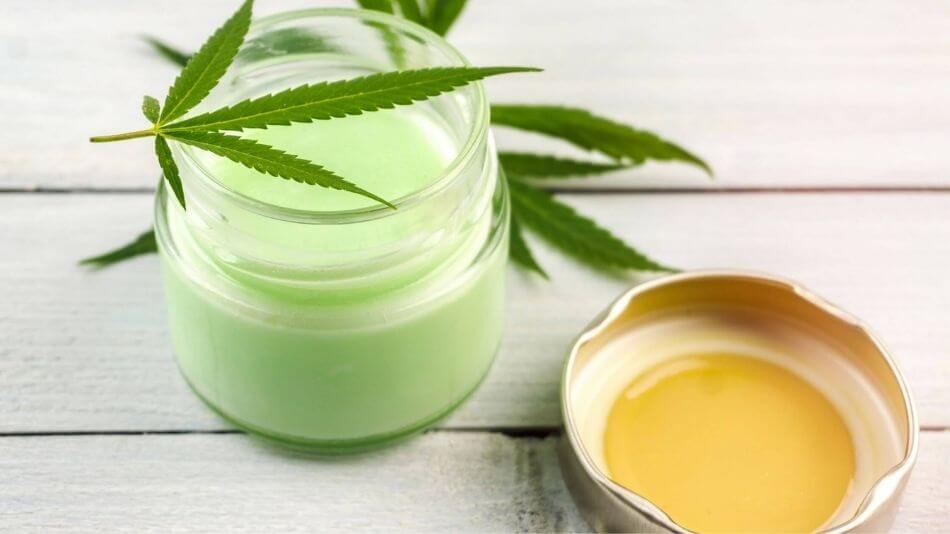Considering using CBD as an alternative pain medication? Unsure where to start? Read on for our ultimate guide to CBD oil for pain.
While CBD has emerging potential as a treatment for pain, it is somewhat different from pain relievers on the market. Its significant benefits include not being addictive, improving mood, having a wide variety of administration methods, and having only minor side effects. However, CBD is also expensive and illegal in some states and still has some adverse side effects, and it is a less clearly effective and well-studied pain reliever.
Continue reading to see our breakdown of the most recent research on CBD for pain relief, how to use CBD for pain relief and how long it takes, the differences between CBD and traditional pain medications, and all of CBD’s relative pros and cons as a pain medication.
Current research on CBD for pain
Currently, we know a few things about CBD’s role in managing pain. Primarily, scientists are well aware of CBD’s anti-inflammatory effects and how the compound interacts with our endocannabinoid systems to limit pain. Additionally, there is also a historical precedent for cannabis as a form of pain relief. But what does the research say about pain relief specifically?
While CBD has only been legal since 2018, which has gone hand-in-hand in a boom in research, studies investigating the ability of cannabinoids to treat pain stretch back decades and make up one of the more robust sectors of CBD research. One 2008 review on the matter indicates a high potential for CBD to treat “difficult-to-treat pain” and discusses the consistent ability of cannabinoids to address pain in clinical trials for various ailments, including cancer pain and fibromyalgia pain. Additionally, the review indicates a mechanism for cannabinoids to augment pain through their interactions with the endocannabinoid system, a fundamental regulatory system for bodily pain.
Fortunately, the research has only continued and become more refined over time. One 2018 review goes over the literature on CBD’s analgesic effects. It notes that the compound is remarkably well-tolerated in clinical trials, is moderately effective in treating pain, and is reasonably well-suited to treating chronic and neuropathic pain, which is pain linked to damage in your nervous system. However, the review does its due diligence and notes that the long-term effects of CBD are not known yet and that the clinical trials do still have some flaws, including small population size, heterogeneous test subjects, and short treatment durations. Additionally, the review notes that CBD helps ease very particular types of pain rather than all pain across the board.
How long does it take for CBD oil to work for pain relief?
The length of time it takes for CBD to begin working to relieve pain can vary depending on various factors, the most predictable of which is the method of delivery.
CBD oil comes in many forms, including CBD edibles, CBD softgels, and CBD vapes, among other types of products. All of these forms take different paths through your body and are metabolized very differently.
CBD topicals
CBD topicals are among the slowest-onset of any form of CBD, as they never reach systemic circulation, limiting their reach and access to your body. However, this doesn’t mean they are not effective in treating localized pain in the body at all. CBD topicals should begin working anywhere from one to two hours after application, depending on your product, product type, and a variety of other factors.

CBD edibles
CBD edibles, including CBD oil mixed into food and drink, CBD softgels and pills, and CBD gummies, are also quite slow-onset when compared to other forms of CBD. Their slow metabolism time is due partially to the length of time it takes for CBD to pass through the stomach and liver, which can be a prolonged process CBD users will have to wait through. However, when CBD edibles begin to work, which should take anywhere from one to two hours, they can provide balanced and long-lasting relief to individuals experiencing mild to moderate pain.
Sublingual CBD
Taking CBD sublingually is similar to taking it in the form of an edible, but slightly different. In this method, CBD can quickly make it into systemic circulation since most of the absorption is done through the tissues in your mouth as you hold it under your tongue rather than through your gut wall. Sublingual CBD oil can take anywhere from 15 minutes to 45 minutes to begin working, at which point it can provide very effective relief.
Vaping CBD oil
Vaping CBD is hands-down the fastest method of CBD delivery available, as the tiny, inhalable particles quickly and easily permeate your lungs and enter into your bloodstream, reaching systemic circulation within anywhere from 15 to 45 minutes after use. This quick absorption makes smokable CBD oil an excellent option for individuals using CBD to help with pain.
In summary:
- Different methods of CBD delivery can vary greatly in terms of onset time.
- CBD topicals take anywhere from one to two hours to begin working.
- CBD edibles take anywhere from one to two hours to begin working.
- Sublingual CBD takes anywhere from 15 to 45 minutes to begin working.
- CBD smokables take anywhere from 15 to 45 minutes to begin working.
How to use CBD oil for pain
Using CBD oil for pain can also differ depending on the type of CBD product you have at your disposal. However, the process is generally quite simple and fast-acting. The amount of CBD you use for pain can also differ depending on various factors, including body weight, metabolism, diet, and your frequency of CBD use.
CBD topicals
If you’re looking to treat localized pain, or pain that is skin-deep like sore muscles, it might be best to use a topical CBD product like an ointment, salve, or lotion. While topical CBD never reaches systemic circulation, it can still help to treat pain in small spots on your skin.
In order to use CBD topicals to treat pain, clean the portion of the skin that you’re looking to apply the CBD to. Consider applying a small amount to a visible area on your skin, such as your wrist or inner elbow, in order to test if you are allergic to your product or not beforehand. If no allergic reaction occurs, place the desired amount of CBD product onto the affected area. Never use CBD topicals on open wounds, scratches, or cuts.
CBD for internal use
When looking to use CBD to treat more widespread or internal pain, it may be best to use CBD via one of many internal delivery methods, including edibles, smokables, and sublingual oils. CBD that enters your bloodstream has the opportunity to enter into systemic circulation and make it throughout your body. This way, the CBD has greater chances of interacting with different endocannabinoid receptors inside your body and limiting inflammation and pain.
If you are taking CBD in an edible form, usage is simple: just swallow it! You can mix edible CBD oils into drinks or drizzle it on top of salads, or you can take CBD softgels or gummies as directed on their bottles. These should work well over time to relieve pain in a consistent manner.
Smokable CBD is also quite simple to administer, although it may be a bit more intimidating for those who have never smoked before. You can vape CBD by placing the CBD oil in a vape or mixing your CBD oil with your vape oil. Regardless of the method’s particulars, it essentially comes down to heating up and inhaling (although the vape does most of the work for you). With smokable CBD, pain relief comes quickly.
Sublingual CBD is a slightly more involved form of administration, although it is still relatively simple. Take a few drops, place them under your tongue, and leave there for anywhere from 30 seconds to two minutes. Once the allotted time has passed, either spit or swallow excess oil.

In summary:
- CBD topicals can be useful in treating localized pain, rather general or internal pain.
- In order to use CBD topicals, clean the affected area and place CBD cream on it. Make sure to do a patch test beforehand in order to determine if you’re allergic to the products you’re using or not.
- CBD edibles are very simple to use: just swallow them, and wait for your body to metabolize the CBD.
- Smokable CBD is also very simple to use. Just heat up your CBD and inhale it (unless you’re using a vape, in which case your vaporizer should heat it up for you).
- Sublingual CBD is applied under the tongue, left to absorb for 30 seconds to two minutes, and then the excess is either spat out or swallowed.
CBD vs pain medication
Since CBD shows some potential as an effective alternative to traditional pain medications, it may be valuable to see how the two types of pain relief measure up and why you might decide to choose one or the other (or a combination of the two) to treat your pain. However, regardless of which one you pick, keep the advice of your doctor in mind if you’re looking to treat chronic pain or pain from a recent surgery or accident. Always be sure to mention to your doctor that you’re considering CBD as a supplement or alternative to any medications you’re currently taking, as they may be able to offer some advice on potential drug interactions and risks.
So that we can better break down the differences between CBD and pain medication, we’ll divide pain medications into two main categories: over-the-counter (OTC) medications and prescription medications.
Over the counter
While the research on CBD’s effectiveness as a pain reliever is still relatively new and largely pre-clinical, scientists seem to believe that CBD oil operates similarly to NSAIDs and other pain drugs in how it interacts with inflammation in the body.
However, there are some essential distinctions between OTC pain relievers and CBD oil, such as:
CBD has more ways to be administered than traditional pain relievers.
Generally, OTC pain medications are administered one way: orally. While you may be able to get a hold of liquid NSAIDs or pain-relieving ointments, or you may be able to purchase higher or lower dosage pills, OTC pain relievers will generally be quite uniform in their method of delivery in your body. This variety can be an appealing trait of CBD products for many consumers who desire versatility in their pain relievers to suit their needs better.
While orally administered ibuprofen works a lot faster than orally administered CBD, you don’t get the speedy effectiveness of something like a CBD preroll, which can begin working in only 15 minutes. Additionally, this factor provides you with a lot more control over how you wish to administer your medication.
Dosages for CBD oil are less straightforward.
Unlike with traditional OTC medications, dosing for CBD is a much more involved process. Often, first-time users will not know how much CBD they need and will have to start small and slowly boost their dosages every time they consume CBD. Dosing often involves paying attention to the quantity of CBD in your bottle, figuring out the amount in a drop, and looking up how much you need for your particular ailment through guides that just may not work for your specific needs. Additionally, dosing across delivery types of CBD administration is often inconsistent and requires a reasonable degree of trial and error.
By contrast, with most pain relievers, the label will often simply provide a dosing amount for adults and children. Is it not as necessary to get the specifics exactly right, especially since OTC pain relievers do not have mental effects that may be amplified in an undesired way by higher doses.
CBD is less easy to access than OTC drugs
While CBD has been federally legal since 2018, it’s important to remember that not all states have retained that status. Instead, some states in the U.S. have put limitations on CBD products, how they can be made, who can buy and sell them, and even their statewide legality. By contrast, OTC pain medications are entirely legal, and anyone can purchase them.
Additionally, CBD is just harder to get a hold of, even in states where it is legal. While more and more non-specialty stores across the country are beginning to sell CBD (and while more and more CBD specialty stores are popping up in areas where there were none before), it’s just not as ubiquitous as OTC medications like Advil or Tylenol.
Finally, CBD is also less affordable than OTC pain medications — a large bottle of ibuprofen costs significantly less than a small bottle of CBD oil. Of course, while CBD offers more benefits than just pain relief, it may be a costly endeavor to use it primarily to treat pain.
All of this amounts to CBD not being particularly widely accessible for individuals who may want to use it to treat pain, especially if it is chronic.
CBD has effects other than pain relief
CBD doesn’t just relieve pain; for many people, CBD is adept at treating anxiety, boosting mood, boosting focus, and regulating sleep. OTC pain medications do not have these added effects and instead primarily focus on limiting pain and inflammation inside of the body.
However, for some individuals, this can also be a drawback. Some people might have adverse reactions to CBD oil due to its widespread effects on the endocannabinoid system. Others may experience rare side effects, such as drowsiness, diarrhea, and low blood pressure. For some who are just looking to use CBD to manage pain, this might be frustrating and may make you opt for a more traditional and straightforward pain reliever.
Prescription
CBD may have fewer side effects than prescription painkillers
Many prescription painkillers come with unpleasant and undesirable side effects that may make treatment more complex, including nausea, vomiting, drowsiness, confusion, sedation, constipation, and stomachache.
While CBD still has some unpleasant side effects for some users or at high enough doses, the side effects are less severe and often rarer. These limited adverse effects can make CBD a good option for frequent painkiller users looking to avoid unpleasant side effects.
CBD is non-habit-forming
Unlike OTC pain medications, some prescription medications like opioids can be addictive and potentially harmful to your health. Individuals who have past histories of addiction or use opioids to treat chronic pain conditions can be particularly vulnerable to becoming dependent on opioids and eventually becoming addicted. Many individuals may opt not to take opioids after certain surgeries for this reason.
By contrast, CBD is entirely non-addictive and non-habit-forming. It does not get you “high,” which cannot be said of opioid painkillers. While it may not pack the same sort of punch as a prescription opioid, users do not have to worry about any chemical dependence forming while taking CBD, even after a long period of time.
As far as studies can show, CBD does not seem to form a tolerance in long-term users, either, indicating that you will not have to indefinitely “up” your dosage to experience the same effects. Some evidence even seems to suggest that CBD could have the effect of forming a reverse-tolerance, where outcomes are amplified overtime on the same dosage.
Furthermore, CBD may also have promise in treating addictions to other substances like opioids and alcohol.
CBD is less effective at treating pain
It’s an obvious point, but one worth noting: prescription pain-relievers such as opioids and prescription-only NSAIDs and other non-narcotic analgesics are incredibly potent drugs used to relieve pain after accidents and surgeries. They are utilized for moderate-to-severe pain in the clinical setting and are also used to manage severe chronic pain. While it is true that CBD’s potential in terms of clinical pain management is not fully known, we can safely assume that it is not quite so powerful and cannot compete with prescription pain medication in terms of efficacy.
There is less clinical proof of CBD’s efficacy as a pain reliever.
While there is undoubtedly research pointing to CBD as a pain reliever and anti-inflammatory drug, it’s worth noting that most of these studies are pre-clinical animal studies without large-scale human participation. By contrast, medications used clinically for pain relief like opioids and prescription-only NSAIDs have been thoroughly tested, vetted, and checked for accuracy.

Pros and cons of CBD oil for pain
CBD offers a wide variety of benefits for treating pain and lacks many of the drawbacks of traditional pain medications. However, CBD also has its own problems that may make it unsuitable for treating some individuals’ pain. To summarize, here are some of CBD’s significant upsides and drawbacks for treating pain:
Pros of CBD oil for pain:
- CBD is moderately successful in treating pain, especially neuropathic pain.
- You can administer CBD oil in a wide variety of ways, giving you many options depending on your preference and needs.
- CBD is non-habit-forming.
- CBD can provide additional positive effects, like boosted mood and reduced anxiety.
Cons of CBD oil for pain:
- It’s just not as effective as some traditional medicines.
- Some individuals experience side effects with CBD.
- CBD is not legal, widely available, or affordable in all states.
Takeaway
In the coming decades, CBD may prove to be a fantastic clinical treatment for severe pain that is difficult to manage. However, as of right now, it mostly shows promise as an alternative to painkillers in managing more mild chronic conditions, with a greater degree of user effort and trial-and-error than prescription medications.
CBD has its own obstacles in being used as a medication, but so do both OTC and prescription painkillers, so it is worth looking at your own desires and lifestyle to determine what kind of treatment is right for you. However, once again, be sure to mention your interest in CBD to your doctor — they may be able to help you avoid any potentially harmful drug interactions or let you know if they think it is a good option for you.
If you’re looking to begin using CBD to manage pain, consider browsing our directory of CBD products. Here, we offer a wide variety of products from several sellers concerned with your health and well-being, from pre-rolls to CBD flower, CBD oil, patches, isolates, and more.
Frequently Asked Questions (FAQ’s)
Does CBD really do anything?
CBD is like the superhero of cannabinoids: it’s incredibly helpful and versatile, and it has very few side effects. CBD for pain is common, as we’ve discussed, but CBD can be used for all sorts of things.
In addition to pain relief, CBD is known to help lower anxiety and depression. It’s also believed to help you sleep at night if you suffer from insomnia, and some studies suggest that it may be good for heart health and mental health in general.
Does smoking CBD relieve pain?
Because CBD is good for pain, smoking flower (the physical buds of a marijuana plant) for pain relief is fairly common. Products that contain CBD are available on the market, and medical marijuana products often offer high levels of CBD (making them good medications for pain relief).
Smoking flower that contains high levels of CBD is a great way to use CBD for pain relief for some, but others might prefer to avoid smoking/inhalants altogether.
If you have a respiratory illness, like asthma or COPD, you might want to look into edible forms of CBD like gummies, or perhaps CBD oil. Our shop, which you can access here, features great picks and is your one-stop shop to find CBD for pain relief.
Are there any bad side effects of CBD?
We know by now that anti-inflammatory properties make CBD good for pain relief. But what other effects can CBD have on the body?
CBD isn’t associated with many side effects, and is a very safe/relatively low-risk treatment method for pain relief. However, there are some potential side effects that you may want to take note of.
Common side effects of using CBD for pain relief include nausea, mood swings/irritability, and/or fatigue. However, if you notice any adverse effects when taking CBD, it’s always a good idea to consult your doctor.
Can I rub CBD oil on my skin for pain?
Using oils, creams, or ointment is a very common way to use CBD for pain relief. You can certainly rub CBD oil on your skin for pain relief, as CBD has many anti-inflammatory and antispasmodic (stops muscle spasms and relieves spasm pains) properties.
CBD can be used topically in many ways: to promote healthy skin, to reduce pain and inflammation, to help relieve muscle spasms and pain, to help with migraines, and more. Its versatility makes it easy to find a way to incorporate it into your routine in the way that you need.









